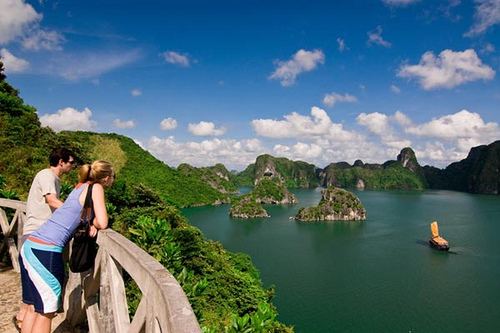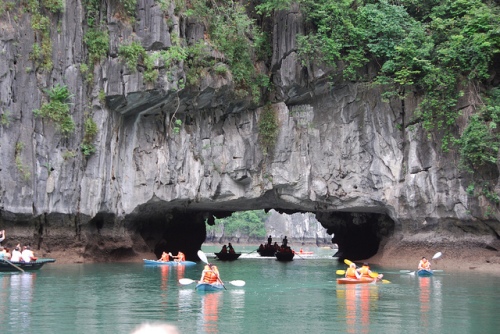Vietnamese people believe that worshiping around the year is not as important as at the time of the Seventh Lunar Full -moon Festival which is fallen right on the 15th of July in Lunar Calendar. This is the second largest traditional festival just after the Lunar New Year Festival.

Adult and Child is worshiping for the ancestor and praying for the best things to family/ relatives a in 7th Full-moon Festival
In Vietnamese, the 7th Lunar Full-moon festival is also called “Vu Lan Bao Hieu” (Parents’ day) or “Xa toi vong nhan” (Wandering Soul’s day).
The name of this full-moon festival is according to the legend of Muc Lien one of the Buddha’s ten principle disciples saw his late mother suffering the tortures of hell and had nothing to eat but fire. Following Buddha’s advice, on the seventh full moon of the year, Muc Kien Lien gathered monks and devotees to pray for his mother’s relief.
The combined prayers proved to be so powerful that they achieved the release not only of Muc Kien Lien’s mother, but also for countless other souls. Ever since, on the festival of Vu Lan – Wandering Soul’s Day- the gates of hell are believed to be thrown open to give the tormented souls 24 hour holiday.
Hence, such gathering has become an annual festival to express gratitude towards parents and ancestors.
In the thoughts of Vietnamese, the Vu Lan or Xa Toi Vong Nhan Festival should be done at the pagoda first then people continue praying at their home later. Vietnam tours packages
If you visit Vietnam right on this occasion (this year is on 28th Aug in Western Calendar), you will see many people go to the pagodas or temples for worshipping, burning incense (it is believes that the smoke of the incense is linking the world of alive people and dead people), preparing offerings of vegetarian foods, clothes, votive papers and release animals like bird, fish or snail …
Visiting the pagoda on this day, you will realize some people also wear either a red rose and others wear a white rose. The red rose is for those who parents are still alive and the white one is for those who parents passed away. The rose is the symbol of love and the gratitude of people to their ancestor.

This women is wearing a red rose means that her parents are still alive and she is praying for the bests things for them
At home, people will prepare offerings to pray for their ancestor and a tray filled of food such as steam rice, traditional candies, water, colorful paper clothe, a glass or dish of rice mix with salt is set in front of the house to pray for homeless souls and wish them could rest in peace. After finishing the worship, the adult will share the food to the children at the neighborhood. The children symbolize for the wandering souls will then robbed the food on the tray. Tours in Indochina
At some provinces by the seaside such as Qui Nhon, people also drop the paper boat into the sea to pray for those who vanished while sailing.
The Seventh Full-moon Festival is a good tradition of Vietnamese people that is still remained until now.
Hope this post could give you some ideas regarding this meaningful festival.





























































